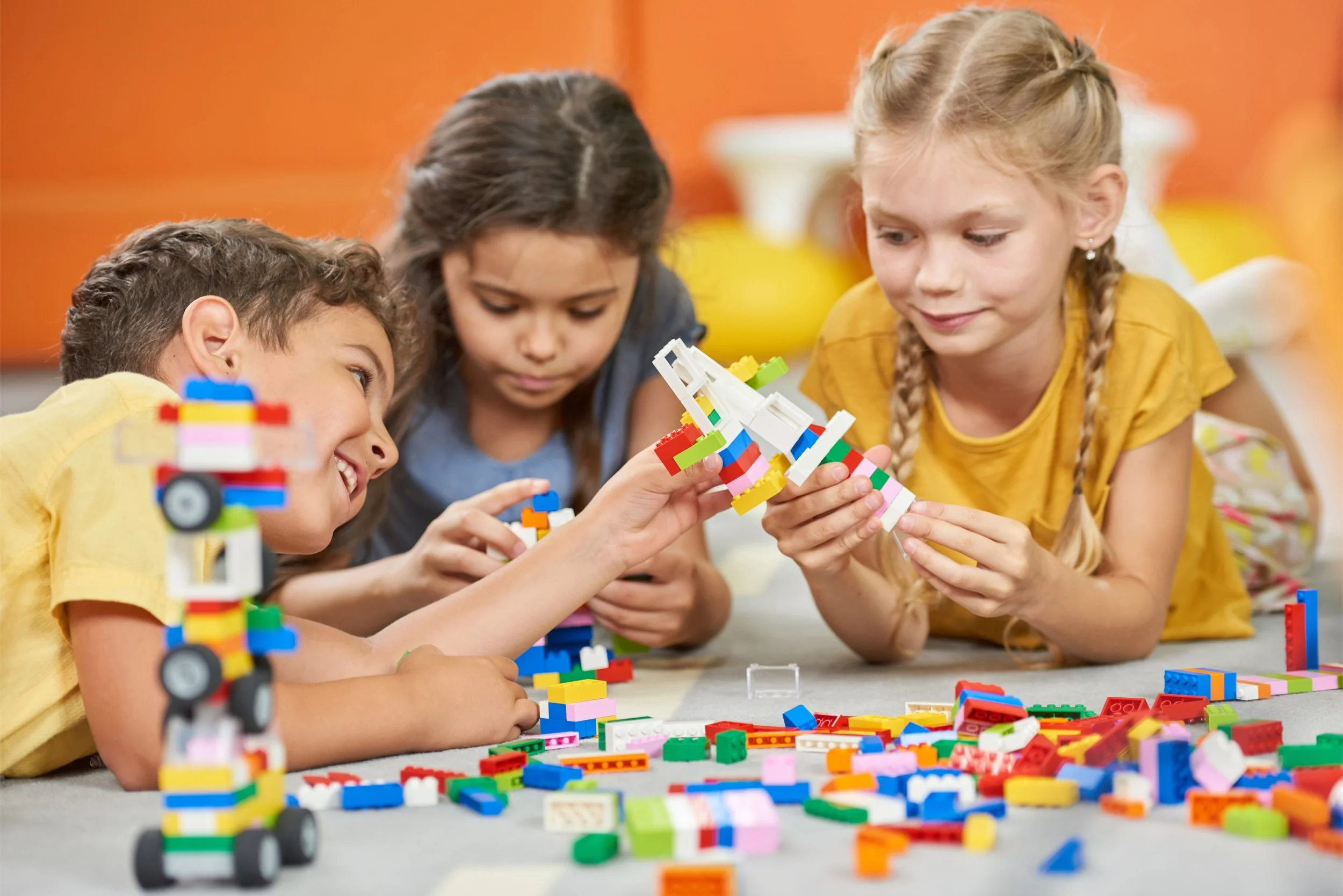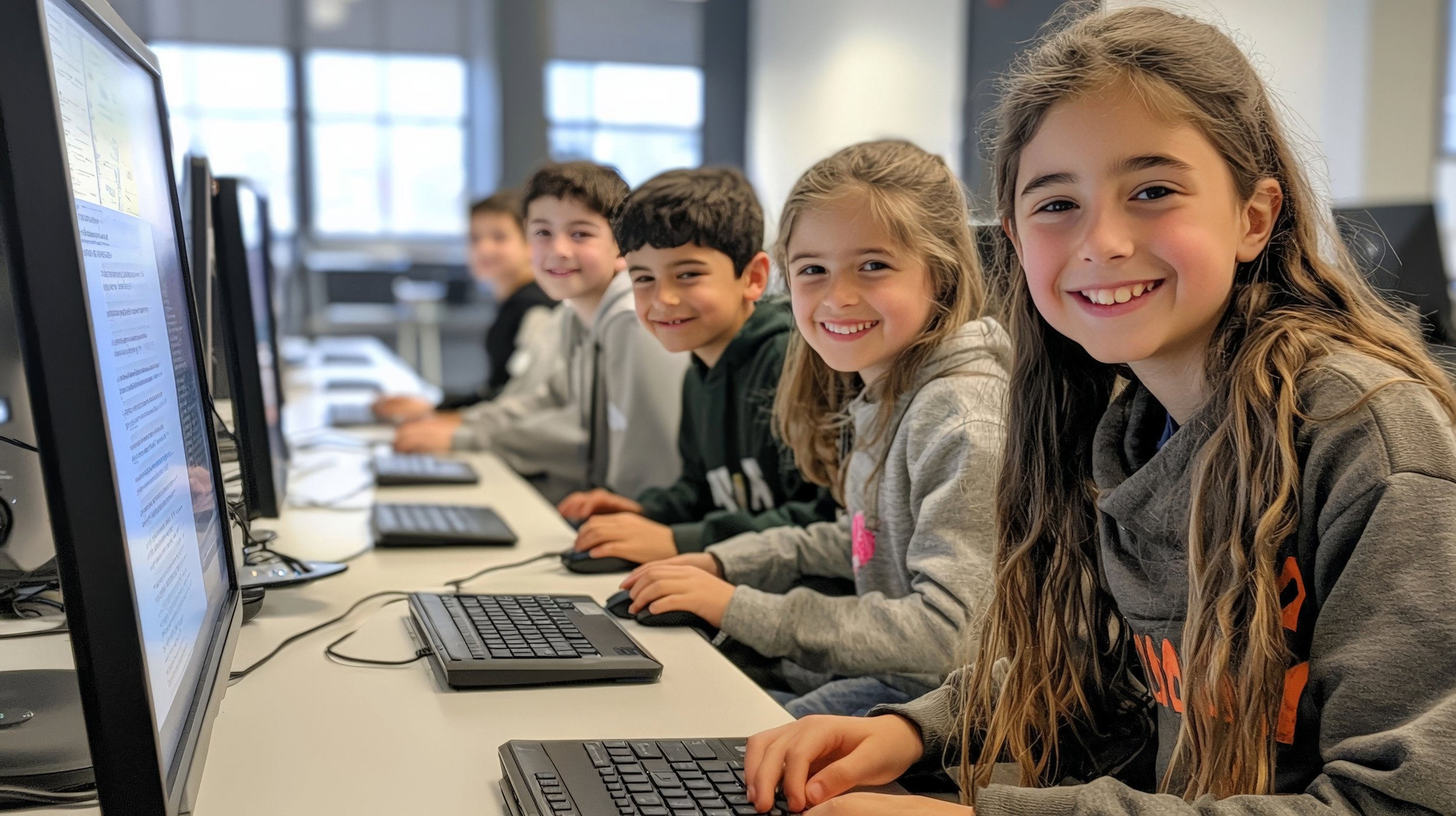After-School Programs
Create your own exciting projects and games while learning skills aligned with Utah Core Standards
TaliTech offers two exciting learning tracks for K-6 kids
Parents and kids can pick from two learning tracks designed to develop computational thinking skills in K-6 learners throughout the school year (late August through late May). Each track is created to align with the Utah State Board of Education (USBE) Utah Core Standards for K-12 Computer Science.
The first track emphasizes computational thinking, problem-solving, and logic through engaging games, puzzles, and both on-screen and off-screen activities. It also introduces kids to the world of technology and how devices communicate with each other. This track fosters a well-rounded foundation of the Utah Core Standards for K-5 Computer Science.
Young children don’t separate learning from play, so neither do we!
Track 1: Computational Thinking Foundations
-
Identify common hardware and software components (mouse, keyboard, storage, trackpad, tablet devices, laptop, monitor, application (app), input, output, etc.) as well as their function
Operate a variety of computing devices to perform tasks accurately and quickly based on user needs
Follow and create basic sequences of instructions (algorithms) for everyday tasks
Practice basic problem decomposition by breaking down simple tasks into steps
Apply pattern recognition in data visualizations to make predictions
Demonstrate understanding of cause and effect in simple systems
Create and debug simple “algorithms” (instructions) using physical objects or storytelling
-
Lessons will consist of activities that are both on-screen and off-screen which are suitable for prereaders and early elementary school learners. Open-ended play is encouraged and instructors will often take on a “facilitator” role that is more guiding than directing.
Fun block-based learning where students get to build their own games using Scratch Jr. or Scratch and practice essential critical-thinking and “debugging” skills
Logic puzzles where students will develop essential deductive reasoning and thinking skills - relationships, analogies, sequences, deduction, inference, pattern decoding, and critical analysis will be emphasized
Show-And-Tells are a wonderful opportunity for students to share their discoveries with their friends and practice communication skills
Unplugged activities (PreK-2) will introduce concepts such as and algorithms and data visualization to students using hands-on games and physical activities that encourages their natural instinct to explore and experiment
-
Class size: Small class sizes with 2-4 students per group
Track Duration: Classes are held weekly between August-December or January-June, following local school district schedules.
Weekly Schedule:
One after-school class (1 hour): Focused learning and exercises
One Saturday class (1.5 hours): Free play, project work, and collaborative activities
We will do our best to schedule the days that work best for you.
Track 2: Computer Science and Programming
The second track immerses students in the world of computer science, where they learn the foundations of programming (coding), discover how computers work, and directly apply computational thinking and problem-solving skills. We recommend this approach for children who are at a chapter-book reading level (and above) so they can delve into programming languages, such as Python, with more ease. This track will empower students to create their own projects, innovate, and start making real-world connections with computer science.
-
Create programs using elementary block programing (with Scratch and Minecraft Education) that contain simple loops. These loops are repeating a pattern to create an image (such as a square), or to address a problem
Apply computational thinking concepts to design and create interactive stories or games
Introduce text-based programming concepts using Python (for chapter-book readers)
Develop understanding of basic data types, variables, and control structures
Create and present a culminating project that demonstrates programming skills and computational thinking
-
Lessons will have an instructor-led discussion at the beginning of each class, regular check-ins during activities to gauge understanding, and peer review sessions for collaborative projects.
Fun block-based learning where students get to build advanced games using Scratch and practice essential critical-thinking and “debugging” skills
Minecraft Education will help kids break down (deconstruct) algorithms and list the steps needed to solve a problem into a sequence of tasks and sub-tasks
Introduction to Python will introduce concepts such as algorithms and debugging as students build a personalized project
Show-And-Tell is a wonderful opportunity for students to share their discoveries
-
Class size: Small class sizes with 2-4 students per group
Track Duration: Classes are held weekly between August-December or January-June, following local school district schedules.
Weekly Schedule:
One after-school class (1 hour): Focused learning and exercises
One Saturday class (1.5 hours): Free play, project work, and collaborative activities
We will do our best to schedule the days that work best for you.
“[Computational Thinking is] a creative way of thinking that empowers individuals to be systematic problem-solvers, enabling them to identify problems, then brainstorm and generate step-by-step solutions that can be communicated and followed by computers or humans. With our definition, computers are not required for one to think computationally, and thus [Computational Thinking] is distinct from computer science and coding. In fact, it is our belief that learning to think computationally prepares students for any number of complex problems that they may or may not need digital devices to solve.”
Pricing
$249/month
Track 1 and Track 2 are semester-long programs that include:
2 after-school weekday classes (1.5 hours each)
Laptop and equipment provided
Small snack
Students are admitted on a rolling basis throughout the year.
Payments are due before the month’s first class. Accepted payment methods are:
Online Invoice
Venmo (@talitech)
Apple Cash (801-649-7843)
Cash in-person
Flexible Payments
We want to give all children an opportunity to learn these vital skills that will set them up for success! If you’d like to discuss a flexible payment option that works better for you and your family, reach out to us.
Why You’ll Love TaliTech
Register today
Ready to get started? Fill out this form with some info and we will be in touch shortly!
Please make sure to include the best method to contact you.









